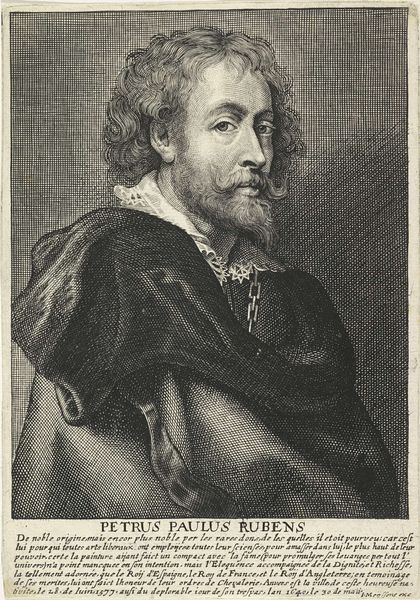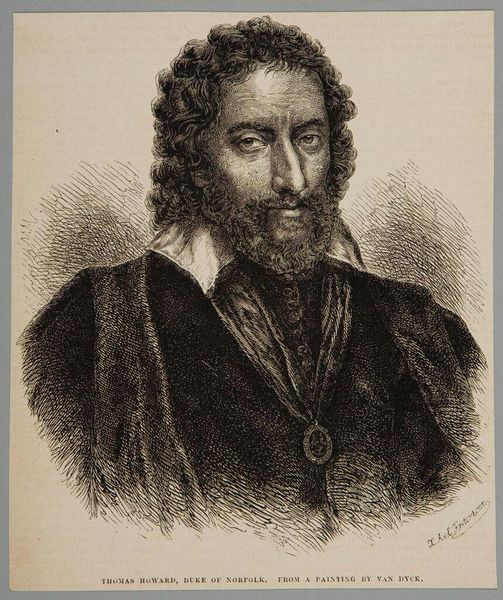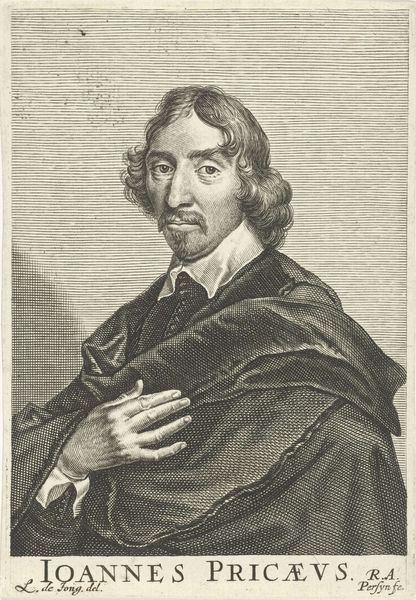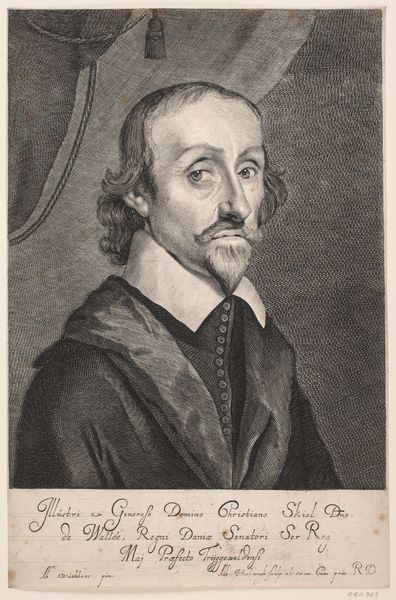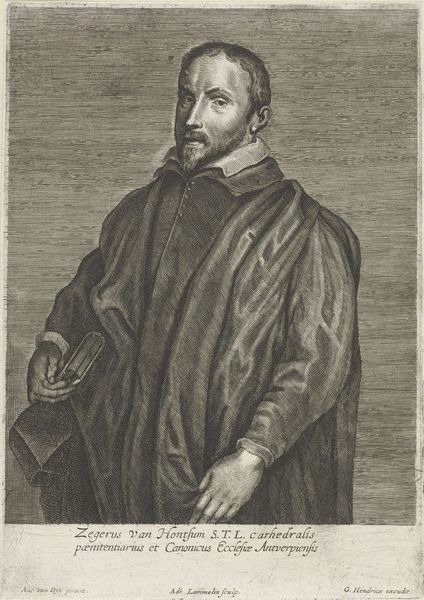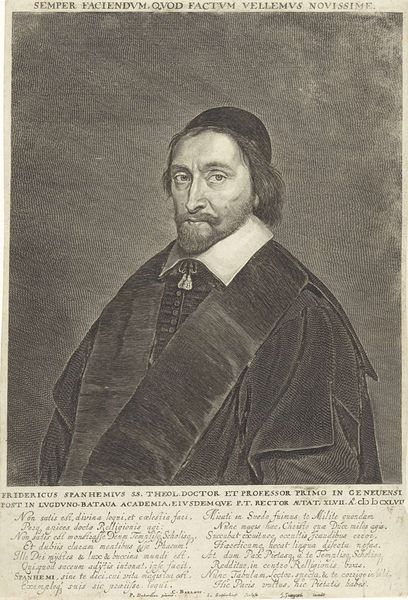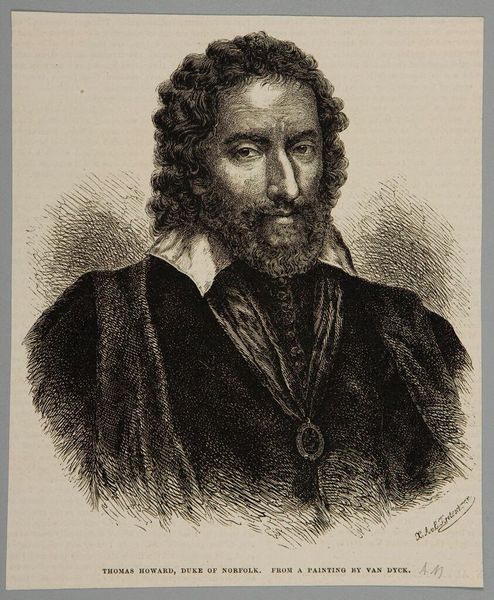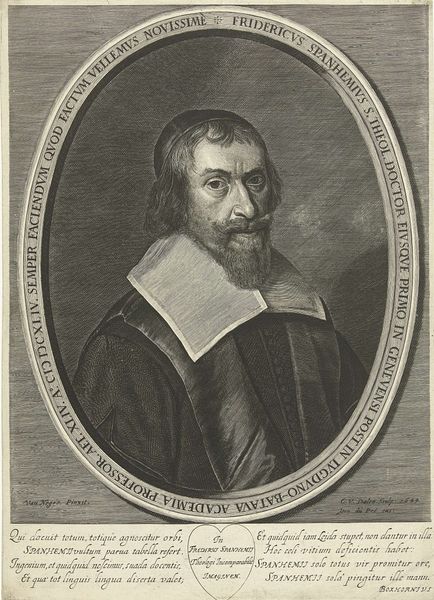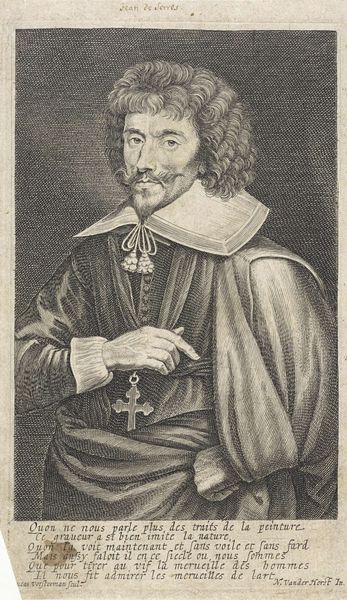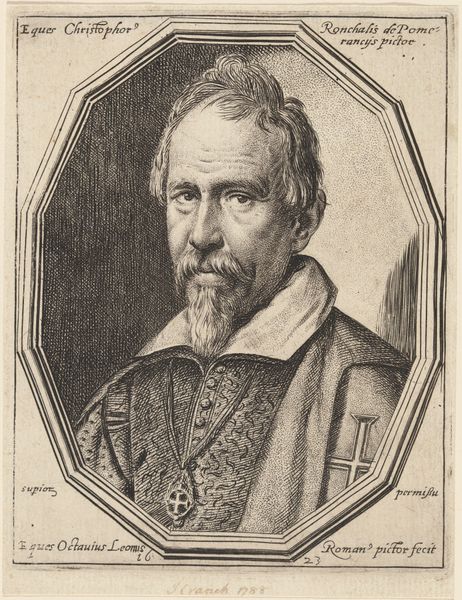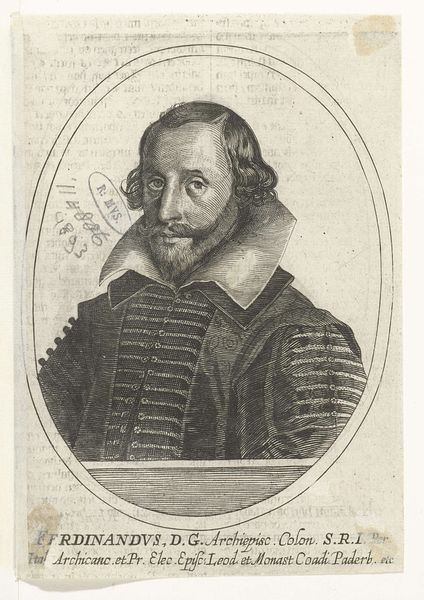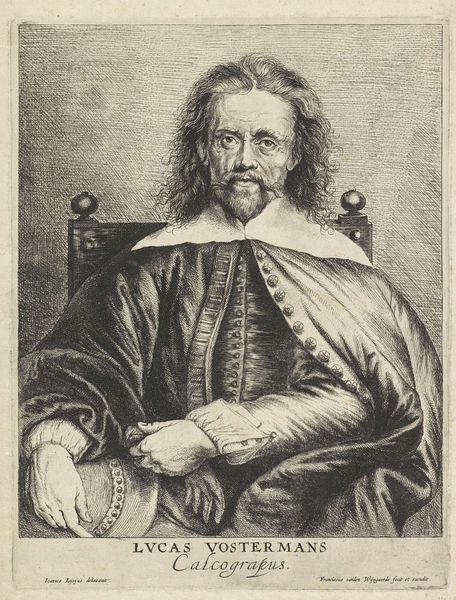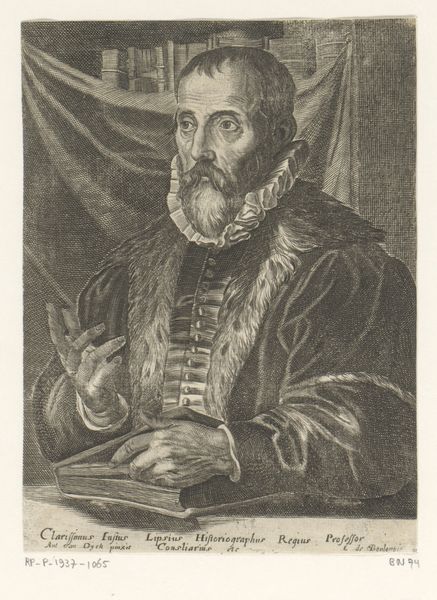
print, engraving
#
portrait
#
baroque
# print
#
old engraving style
#
figuration
#
line
#
portrait drawing
#
history-painting
#
academic-art
#
engraving
Dimensions: height 260 mm, width 203 mm
Copyright: Rijks Museum: Open Domain
Editor: We’re looking at “Portret van Thomas Howard, tweede graaf van Arundel,” a print by Lucas Vorsterman I, created sometime between 1619 and 1641. The detail achieved with just line engraving is impressive. It feels quite formal and reserved; I’m struck by his almost melancholic gaze. What do you see in this piece? Curator: That melancholic gaze, as you call it, is so telling! It speaks volumes about the burdens of leadership, duty, and perhaps even a hint of disillusionment common in portraiture of that era. But look closer at what surrounds it: the detailed rendering of his clothing, his heraldic medallion… Editor: Yes, they appear meticulously rendered. Curator: Exactly! Each element is not merely decorative; they're signifiers. Can you decode any of the symbolism within? Think about his stance, his clothing, the lettering… What memories or aspirations were these meant to invoke or construct for viewers? Editor: I see… The lettering, definitely suggesting status, titles... and his dark clothing, perhaps indicative of seriousness and nobility. Was this visual language commonly understood at the time? Curator: Absolutely! Baroque portraiture was a carefully constructed visual language. This image served as a kind of cultural shorthand, reminding viewers of Howard’s lineage, power, and place within the social and political order. This wasn't simply about capturing a likeness, but constructing an identity meant to resonate across generations. Editor: That gives me a new perspective on portraiture in general. It’s fascinating how much information can be embedded in an image. Curator: Precisely. Now, consider how this carefully crafted image might have reinforced social hierarchies and collective identities in its time, and how those symbols continue to affect us even now. Editor: That's a lot to think about. I hadn't considered how much portraits actively shape cultural memory. Thanks!
Comments
No comments
Be the first to comment and join the conversation on the ultimate creative platform.
